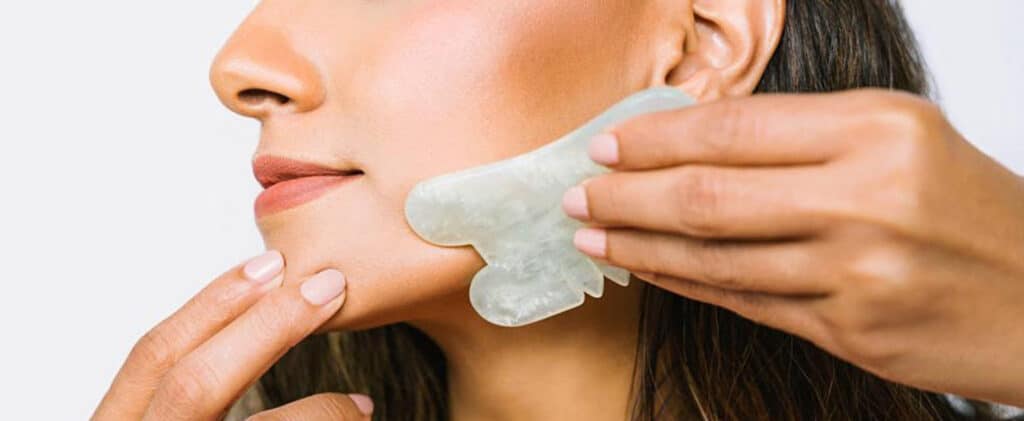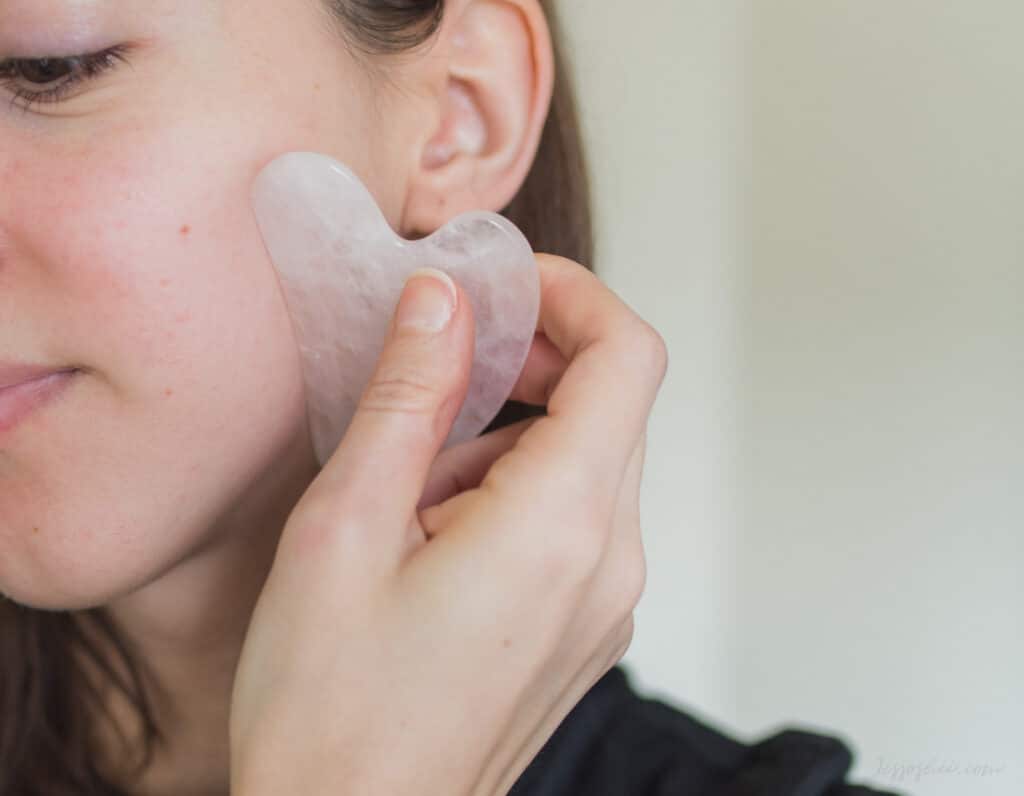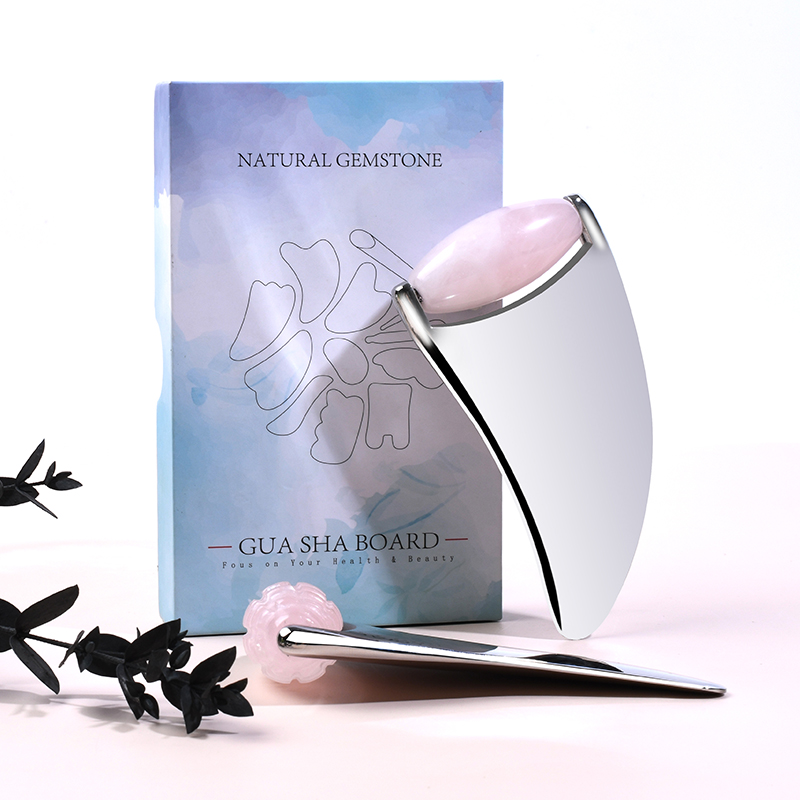
Gua Sha Instructions
Gua Sha is a technique used in traditional East Asian medicine. It is commonly used to treat muscle pain and tension, but research on its effects is limited. We learn more about whether Gua Sha works and if there are any side effects.
Gua Sha is designed to move energy around the body, called “qi”. Treatment consists of rubbing the skin with tools for prolonged periods of time, and applying enough pressure to create a light bruise.
Gua sha may help break down scar tissue and connective tissue, improving joint movement. This treatment does not have any serious side effects, but it is not suitable for people with certain medical conditions.
Let’s get into today’s topic: Gua Sha Instructions
What is Gua Sha?
Gua Sha can be used to treat muscle pain and to break down scar tissue.
Gua Sha is the practice of using tools to apply pressure and scrape the skin to relieve pain and tension. This action can cause minor bruising, usually in the form of purple or red spots called petechiae or prickly heat.
The name gua sha – pronounced gwahshah – comes from the Chinese word for scraping. It may also be called skin scraping, spooning, or stamping.
According to Chinese medicine, Qi or Qi is the energy that flows through the body. Many people believe that one’s chi must be balanced and flowing freely to ensure their health and well-being.
It is also believed that qi can become blocked, causing pain or tension in muscles and joints. Gua Sha is designed to move this blocked energy to relieve pain or stiffness.
Traditional East Asian medicine also sees blood stasis or stagnation as the cause of pain and disease. Another purpose of scraping is to move stagnant or stagnant blood to relieve symptoms.
Some physical therapists use a technique called instrument-assisted soft tissue mobilization (IASTM). Using tools rather than hands during massage allows the physical therapist to apply more pressure.
Gua Sha Use

Gua Sha is most commonly used to relieve muscle and joint pain. Conditions of the muscles and bones are called musculoskeletal disorders. Some examples include back pain, strained tendons, and carpal tunnel syndrome.
Practitioners claim that scraping can also benefit the immune system and reduce inflammation. Sometimes scraping is used to treat a cold, fever, or lung problems.
Small injuries to the body, such as bruises from scraping, are sometimes called microtraumas. These create a reaction in the body that may help break down scar tissue.
Microtrauma may also contribute to fibrosis, which is an excess buildup of connective tissue as the body heals.
Physical therapists can use IASTM on connective tissue that does not move the joints properly. This problem may be due to repetitive strain injury or other conditions. Gua Sha is used in conjunction with other treatments, such as stretching and strengthening exercises.
Gua Sha Benefit
Research suggests that scraping may help people who use a computer and suffer from neck and shoulder pain.
Researchers conducted small studies to see if scraping works in the following groups of people:
- women approaching menopause
- People with neck and shoulder pain from computer use
- Male weightlifter helping recovery after training
- senior man with back pain
- Women found that perimenopausal symptoms such as sweating, insomnia, and headaches were alleviated after scraping.
A 2014 study found that gua sha improved the range of motion and reduced pain in people who regularly used computers, compared with a control group that did not receive treatment.
In a 2017 study, weightlifters who used Gua Sha rated weightlifting as less effortful after treatment. This may indicate that the treatment can speed up muscle recovery.
Elderly people with back pain are treated with scraping or hot compresses. Both treatments were equally effective in relieving symptoms, but the effects of Gua Sha last longerTrusted Source .
After a week, those who received the Gua Sha treatment reported greater flexibility and less back pain than the other group.
Side Effects and Risks
Scraping causes tiny blood vessels called capillaries near the surface of the skin to burst. This produces a distinctive red or purple bruise called a sha.
Bruises usually take a few days or a week to heal and may be tender while they heal. People can take over-the-counter pain relievers, such as ibuprofen, to help relieve pain and reduce swelling.
A person should protect the bruised area and be careful not to bump into it. Using an ice pack can help reduce inflammation and relieve any pain.
Gua sha practitioners should not break their skin during treatment, but it can happen. Broken skin increases the likelihood of infection, so scraping practitioners should always disinfect their tools between treatments.
Gua sha is not for everyone. People who should not scrape include:
- have a disease that affects the skin or veins
- people who bleed easily
- people who take medicines to thin their blood
- people with deep vein thrombosis
- People with infections, tumors or wounds that have not fully healed
- who has an implant, such as a pacemaker or internal defibrillator
Does Gua Sha Hurt?
The treatment shouldn’t be painful, but scraping intentionally creates bruising, which can cause discomfort in some people. These bruises should heal within a few days.
Gua Sha Tools and Techniques

Gua sha uses a hand-held tool with rounded edges.
Traditionally, a spoon or coin is used to scrape the skin, but in modern practice therapists use small hand tools with rounded edges.
Gua sha tools are often weighted to help apply pressure to the practitioner who is performing the procedure.
Practitioners of traditional East Asian medicine believe that some materials have energies that support healing – these materials include Bian stone, jade, and rose quartz. Medical grade stainless steel is commonly used in IASTM or when scraping is performed in the clinic.
The practitioner will apply the oil to the area of the body being treated, which allows the therapist to move the tool over the skin more smoothly.
The gua sha practitioner presses the tool into the body in one direction with smooth, firm strokes. If gua sha is performed on the back or the back of the legs, you may need to lie face down on the massage table.
Take Away
Gua Sha is used to treat a range of diseases and disorders, but only a few specific medical conditions have been studied. More evidence is needed to confirm whether scraping is an effective treatment.
Gua sha is unlikely to have any serious side effects, but it can be painful for some people. People planning to scrape should make sure they seek out experienced practitioners.

